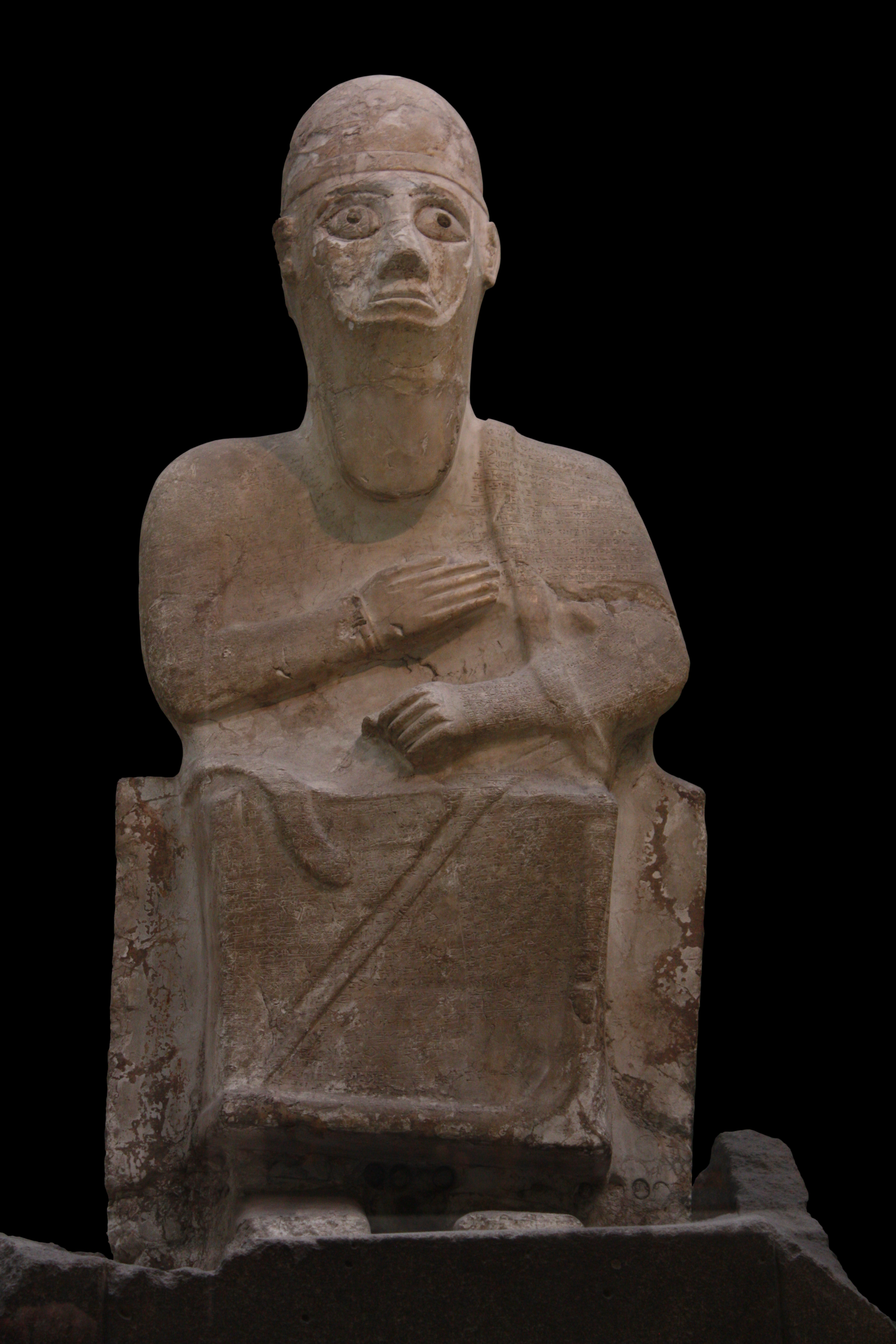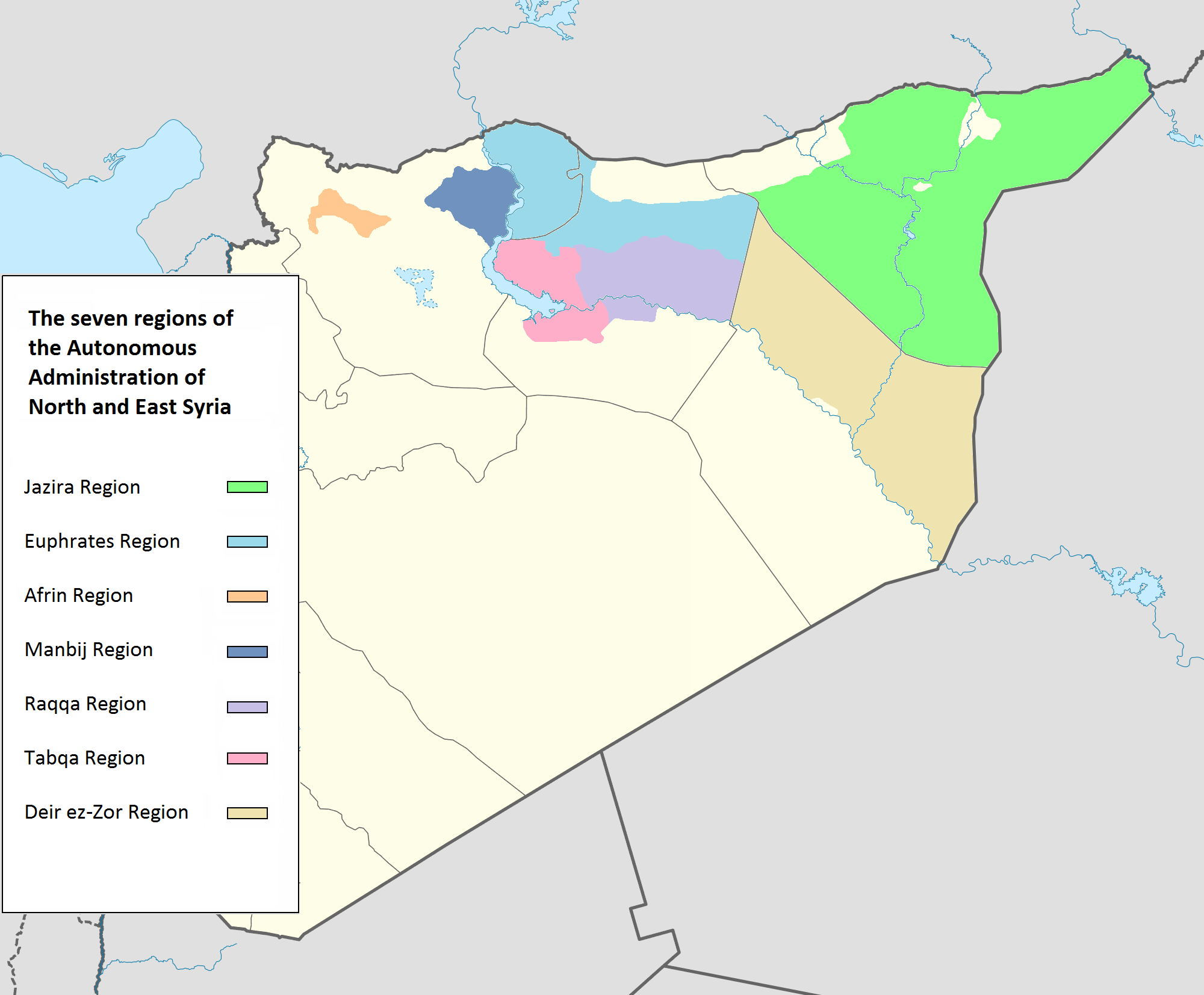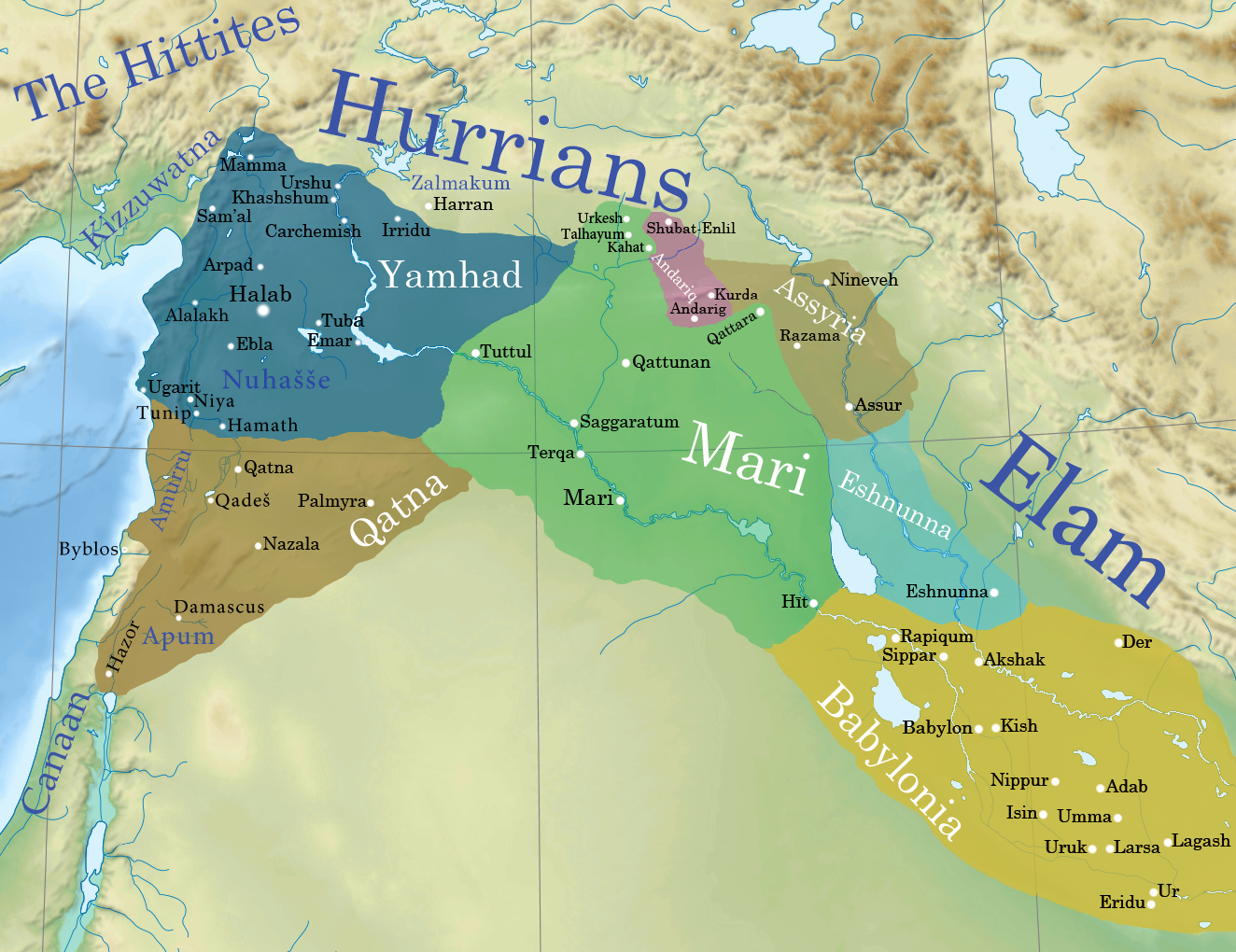|
Emar
Emar (, ), is an archaeological site at Tell Meskene in the Aleppo Governorate of northern Syria. It sits in the great bend of the mid-Euphrates, now on the shoreline of the man-made Lake Assad near the town of Maskanah. It has been the source of many cuneiform tablets, making it rank with Ugarit, Mari and Ebla among the most important archaeological sites of Syria. In these texts, dating from the 14th century BC to the fall of Emar in 1187 BC, and in excavations in several campaigns since the 1970s, Emar emerges as an important Bronze Age trade center, occupying a liminal position between the power centers of Upper Mesopotamia and AnatoliaSyria. Unlike other cities, the tablets preserved at Emar, most of them in Akkadian and of the thirteenth century BC, are not royal or official, but record private transactions, judicial records, dealings in real estate, marriages, last wills, formal adoptions. In the house of a priest, a library contained literary and lexical texts in th ... [...More Info...] [...Related Items...] OR: [Wikipedia] [Google] [Baidu] |
Idrimi
Idrimi (meaning "It is my help") was the king of Alalakh c. 1490–1465 BC, or around 1450 BC. He is known, mainly, from an inscription on his statue found at Alalakh by Leonard Woolley in 1939.Longman III, Tremper, (1991)Fictional Akkadian Autobiography: A Generic and Comparative Study Eisenbraums, Winona Lake, Indiana, p. 60: "...discovered by Sir Leonard Woolley in 1939...Although found in the debris of Level IB (ca. 1200 B.C.), the statue was dated by most scholars back to Level IV (ca. 1500 B.C.)..." According to that inscription, he was a son of Ilim-Ilimma I the king of Halab, now Aleppo, who would have been deposed by the new regional master, Barattarna, king of Mitanni. Idrimi would have succeeded in gaining the throne of Alalakh with the assistance of a group known as the '' Habiru'', founding the kingdom of Mukish as a vassal to the Mitanni state. He also invaded the Hittite territories to the north, resulting in a treaty with the country Kizzuwatna. Jacob Lauing ... [...More Info...] [...Related Items...] OR: [Wikipedia] [Google] [Baidu] |
Yamhad
Yamhad (Yamḫad) was an ancient Semitic languages, Semitic-speaking kingdom centered on Ḥalab (Aleppo) in Syria (region), Syria. The kingdom emerged at the end of the 19th century BC and was ruled by the Yamhad dynasty, who counted on both military and diplomacy to expand their realm. From the beginning of its establishment, the kingdom withstood the aggressions of its neighbors Mari, Syria, Mari, Qatna and the Old Assyrian Empire#Amorite Period in Assyria.2C 1809.E2.80.931750 BC, Old Assyrian Empire, and was turned into the most powerful Syrian kingdom of its era through the actions of its king Yarim-Lim I. By the middle of the 18th century BC, most of Syria minus the south came under the authority of Yamhad, either as a direct possession or through vassalage, and for nearly a century and a half, Yamhad dominated northern, northwestern and eastern Syria, and had influence over small kingdoms in Mesopotamia at the borders of Elam. The kingdom was eventually destroyed by the Hit ... [...More Info...] [...Related Items...] OR: [Wikipedia] [Google] [Baidu] |
Mitanni
Mitanni (–1260 BC), earlier called Ḫabigalbat in old Babylonian texts, ; Hanigalbat or Hani-Rabbat in Assyrian records, or in Ancient Egypt, Egyptian texts, was a Hurrian language, Hurrian-speaking state in northern Syria (region), Syria and southeast Anatolia (modern-day Turkey) with Indo-Aryan languages, Indo-Aryan Indo-Aryan superstrate in Mitanni, linguistic and political influences. Since no histories, royal annals or chronicles have yet been found in its excavated sites, knowledge about Mitanni is sparse compared to the other powers in the area, and dependent on what its neighbours commented in their texts. The Hurrians were in the region as of the late 3rd millennium BC. A king of Urkesh with a Hurrian name, Tupkish, was found on a clay sealing dated at Tell Mozan.Salvini, Mirjo. "The earliest evidences of the Hurrians before the formation of the reign of Mittanni." Urkesh and the Hurrians Studies in Honor of Lloyd Cotsen. Urkesh/Mozan Studies Bibliotheca Mesopotamic ... [...More Info...] [...Related Items...] OR: [Wikipedia] [Google] [Baidu] |
Tell Fray
Tell Fray is a tell, or settlement mound, on the east bank of the Euphrates in Raqqa Governorate, northern Syria. The archaeological site takes its name from an ancient irrigation canal, hence 'Fray' or 'Little Euphrates'. It was part of a rescue excavation project for sites to be submerged by the creation of Lake Assad by the Tabqa Dam. Excavations It was excavated in 1972 and 1973 as a joint Syrian–Italian operation under the direction of Adnan Bounni of the Syrian Service of Archaeological Excavations and the Sapienza University of Rome under the direction of Paolo Matthiae, the excavator of Ebla along with the Aleppo Museum directed by Ch. Chaath, and Johns Hopkins University. The operation was part of the UNESCO-coordinated international effort to excavate as many sites as possible in the area that would be flooded by the reservoir of the Tabqa Dam, which was being constructed at that time. Tell Fray disappeared under the rising waters of Lake Assad in 1974. The e ... [...More Info...] [...Related Items...] OR: [Wikipedia] [Google] [Baidu] |
Ebla
Ebla (Sumerian language, Sumerian: ''eb₂-la'', , modern: , Tell Mardikh) was one of the earliest kingdoms in Syria. Its remains constitute a Tell (archaeology), tell located about southwest of Aleppo near the village of Mardikh. Ebla was an important center throughout the and in the first half of the Its discovery proved the Levant was a center of ancient, centralized civilization equal to Ancient Egypt, Egypt and Mesopotamia and ruled out the view that the latter two were the only important centers in the Ancient Near East, Near East during the Early Bronze Age. The first Eblaite kingdom has been described as the first recorded world power. Starting as a small settlement in the Early Bronze Age ( ), Ebla developed into a trading empire and later into an expansionist power that imposed its hegemony over much of northern and eastern Syria. Ebla was destroyed during the It was then rebuilt and was mentioned in the records of the Third Dynasty of Ur. The second Ebla w ... [...More Info...] [...Related Items...] OR: [Wikipedia] [Google] [Baidu] |
Bronze Age Collapse
The Late Bronze Age collapse was a period of societal collapse in the Mediterranean basin during the 12th century BC. It is thought to have affected much of the Eastern Mediterranean and Near East, in particular Egypt, Anatolia, the Aegean, eastern Libya, and the Balkans. The collapse was sudden, violent, and culturally disruptive for many Bronze Age civilizations, creating a sharp material decline for the region's previously existing powers. The palace economy of Mycenaean Greece, the Aegean region, and Anatolia that characterized the Late Bronze Age disintegrated, transforming into the small isolated village cultures of the Greek Dark Ages, which lasted from to , and were followed by the better-known Archaic Age. The Hittite Empire spanning Anatolia and the Levant collapsed, while states such as the Middle Assyrian Empire in Mesopotamia and the New Kingdom of Egypt survived in weakened forms. Other cultures such as the Phoenicians enjoyed increased autonomy and ... [...More Info...] [...Related Items...] OR: [Wikipedia] [Google] [Baidu] |
Barbalissos
Balis (), also known as Barbalissos () and Barbalissus (Latin), was an ancient and medieval fortress on the Euphrates River near the ruins of the still more ancient Emar. It is particularly known for the 253 Battle of Barbalissos, where the Roman army was defeated by Sassanid Persia. The fortress town's own ruins are located at the modern Qala'at Balis () in the Aleppo Governorate of northern Syria. History The nearby bend of the Euphrates and its trade routes had been controlled in the 2nd millennium BC by nearby Emar, which was finally destroyed in The area also seems to have had a prehistoric ford at times. By the time of the Persian Empire, the area had been resettled and become known by the Aramaic name .. It is likely the area was used during the invasions by Cyrus and Alexander. Under the Roman Empire, Barbalissus was a city in the province of Euphratensis. An outpost near the Roman border with Parthia and Persia, it served as the garrison town for the Dalmatian Cavalry ... [...More Info...] [...Related Items...] OR: [Wikipedia] [Google] [Baidu] |
Meli-Shipak II
Meli-Šipak II, or alternatively ''Melišiḫu''''Me-li-''dŠI-ḪU or m''Me-li-''ŠI-ḪU, where the reading of ḪU is uncertain, -ḫu or -pak. in contemporary inscriptions, was the 33rd king of the Kassite or 3rd Dynasty of Babylon 1186–1172 BC and ruled for 15 years.''Kinglist A'', BM 33332, ii 12. Tablets with two of his year names, 4 and 10, were found at Ur. His reign marks the critical synchronization point in the chronology of the Ancient Near East. His provenance He is recorded as the son of Adad-šuma-uṣur, his predecessor, on a kudurru.''Estate of Takil-ana-ilīšu kudurru'', BM 90827, published as BBSt 3, column 4, line 31, but note King’s 1912 edition uses the alternative reading of the cuneiform –MU-ŠEŠ to give ''Adad-nadin-aḫi''. Elsewhere he seemed reluctant to name him in his royal inscriptions, despite Adad-šuma-uṣur’s apparent renown as restorer of Kassite independence, which has been the subject of much speculation amongst historians. T ... [...More Info...] [...Related Items...] OR: [Wikipedia] [Google] [Baidu] |
Amorite
The Amorites () were an ancient Northwest Semitic-speaking Bronze Age people from the Levant. Initially appearing in Sumerian records c. 2500 BC, they expanded and ruled most of the Levant, Mesopotamia and parts of Egypt from the 21st century BC to the late 17th century BC. The Amorites established several prominent city-states in various locations, such as Isin, Kurda, Larsa, Mari, and Ebla, and later founded Babylon and the Old Babylonian Empire. They also founded the Fourteenth Dynasty of Egypt during the fragmented era of the Second Intermediate Period in the Nile Delta, which was characterized by rulers bearing Amorite names such as Yakbim Sekhaenre, and were likely part of the later Hyksos. The term in Akkadian and Sumerian texts refers to the Amorites, their principal deity, and an Amorite kingdom. The Amorites are mentioned in the Hebrew Bible as inhabitants of Canaan both before and after the conquest of the land under Joshua.van Seters, John, "The Terms 'Amori ... [...More Info...] [...Related Items...] OR: [Wikipedia] [Google] [Baidu] |
Euphrates
The Euphrates ( ; see #Etymology, below) is the longest and one of the most historically important rivers of West Asia. Tigris–Euphrates river system, Together with the Tigris, it is one of the two defining rivers of Mesopotamia (). Originating in Turkey, the Euphrates flows through Syria and Iraq to join the Tigris in the Shatt al-Arab in Iraq, which empties into the Persian Gulf. The Euphrates is the List of longest rivers of Asia, fifteenth-longest river in Asia and the longest in West Asia, at about , with a drainage area of that covers six countries. Etymology The term ''Euphrates'' derives from the Koine Greek, Greek ''Euphrátēs'' (), adapted from , itself from . The Elamite name is ultimately derived from cuneiform 𒌓𒄒𒉣; read as ''Buranun'' in Sumerian language, Sumerian and ''Purattu'' in Akkadian language, Akkadian; many cuneiform signs have a Sumerian pronunciation and an Akkadian pronunciation, taken from a Sumerian word and an Akkadian word that mean ... [...More Info...] [...Related Items...] OR: [Wikipedia] [Google] [Baidu] |
Lake Assad
Lake Assad (, ''Buhayrat al-Assad'') is a reservoir on the Euphrates in Raqqa Governorate, Syria. It was created in 1974 when construction of the Tabqa Dam was completed. Lake Assad is Syria's largest lake, with a maximum capacity of and a maximum surface area of . A vast network of canals uses water from Lake Assad to irrigate lands on both sides of the Euphrates. In addition, the lake provides drinking water for the city of Aleppo and supports a fishing industry. The shores of Lake Assad have developed into important ecological zones. Project history The first plans for a dam in the Syrian part of the Euphrates date to 1927, but these were not carried out. In 1957, an agreement was reached with the Soviet Union for technical and financial aid for the construction of a dam in the Euphrates, and in 1960 a financial agreement was signed with West Germany. Another agreement to finance the project was signed with the Soviet Union in 1965. The project included a hydroelectric po ... [...More Info...] [...Related Items...] OR: [Wikipedia] [Google] [Baidu] |







